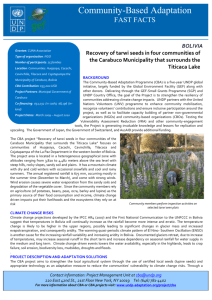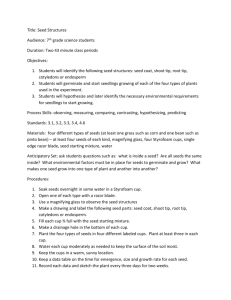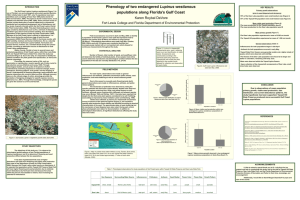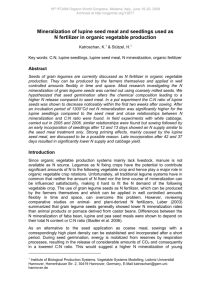Seed ecology of Nootka lupine (Lupinus nootkatensis) in Iceland
advertisement
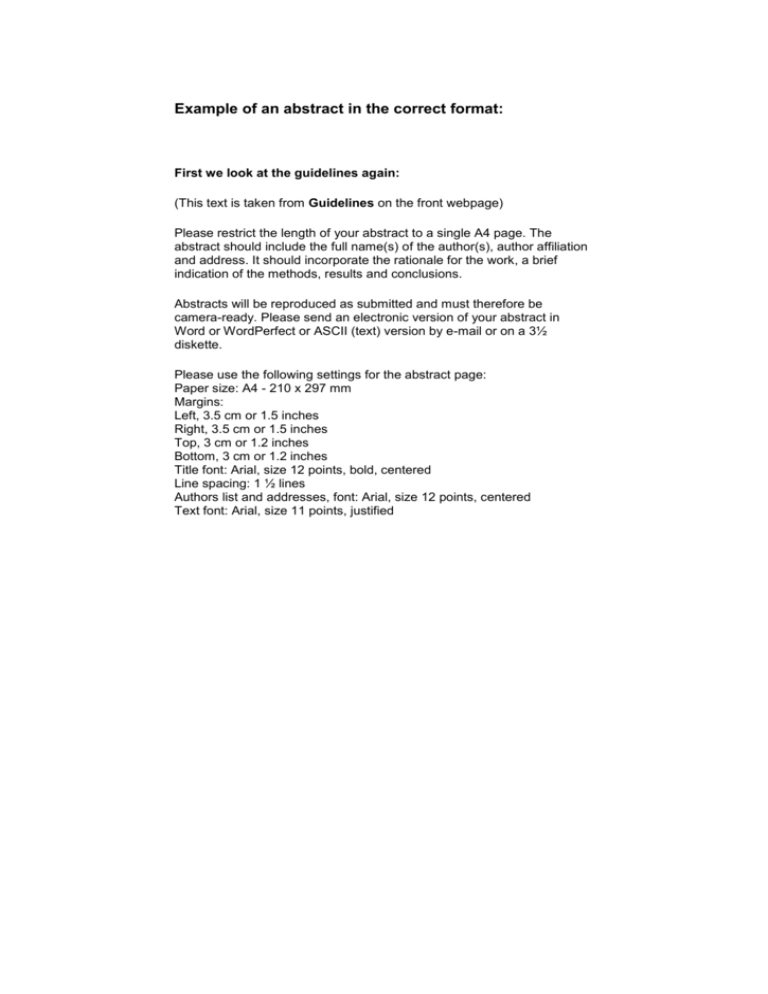
Example of an abstract in the correct format: First we look at the guidelines again: (This text is taken from Guidelines on the front webpage) Please restrict the length of your abstract to a single A4 page. The abstract should include the full name(s) of the author(s), author affiliation and address. It should incorporate the rationale for the work, a brief indication of the methods, results and conclusions. Abstracts will be reproduced as submitted and must therefore be camera-ready. Please send an electronic version of your abstract in Word or WordPerfect or ASCII (text) version by e-mail or on a 3½ diskette. Please use the following settings for the abstract page: Paper size: A4 - 210 x 297 mm Margins: Left, 3.5 cm or 1.5 inches Right, 3.5 cm or 1.5 inches Top, 3 cm or 1.2 inches Bottom, 3 cm or 1.2 inches Title font: Arial, size 12 points, bold, centered Line spacing: 1 ½ lines Authors list and addresses, font: Arial, size 12 points, centered Text font: Arial, size 11 points, justified Seed ecology of Nootka lupine (Lupinus nootkatensis) in Iceland Bjarni D. Sigurdsson1 & Borgthor Magnusson2 1Icelandic 2Icelandic Forest Research, Mógilsá, 116 Reykjavík, Iceland. Institute of Natural History, P.O. Box 5320, 125 Reykjavík, Iceland. Abstract The introduced Nootka lupine (Lupinus nootkatensis Donn ex. Sims) has been used increasingly for land reclamation in Iceland during the last two decades. A prerequisite for its use as a valuable reclamation tool is that its distribution can be controlled. Therefore it is important to study the seed ecology of the species. The present project took place at seven different sites in Iceland, where the lupine has been introduced and formed patches. At the sites, seed production, seed dispersal and active seed bank in soils were investigated. The seed production was found to be variable within the lupine patches. The production was highest in younger parts, close to the expanding edge (maximum 1800 seeds m-2), and much less in inner and older parts (generally 200-500 seeds m-2). At the expanding edge seeds did not disperse further than 3 m. Seed dispersal started in early August, peaked in late September and ceased in early November. The lupine forms a persistent seed bank in the soil. The highest number of buried seeds (6700 and 2900 seeds m-2) was found in older lupine patches, where the lupine had not yet retreated. Even where the lupine had retreated and was replaced by grassland, a large viable seed bank remained in the soil (760 seeds m-2). The seed bank was also buried significantly deeper in older plots, which indicates that the seeds may last for many years in the soil. This has both positive and negative implications for the use of the plant in land reclamation. If erosion starts in a grassland that replaces the lupine, it can recolonise the area from the active seed bank. The long-lived seed bank, however, makes it difficult to fully control the distribution of the lupine.

